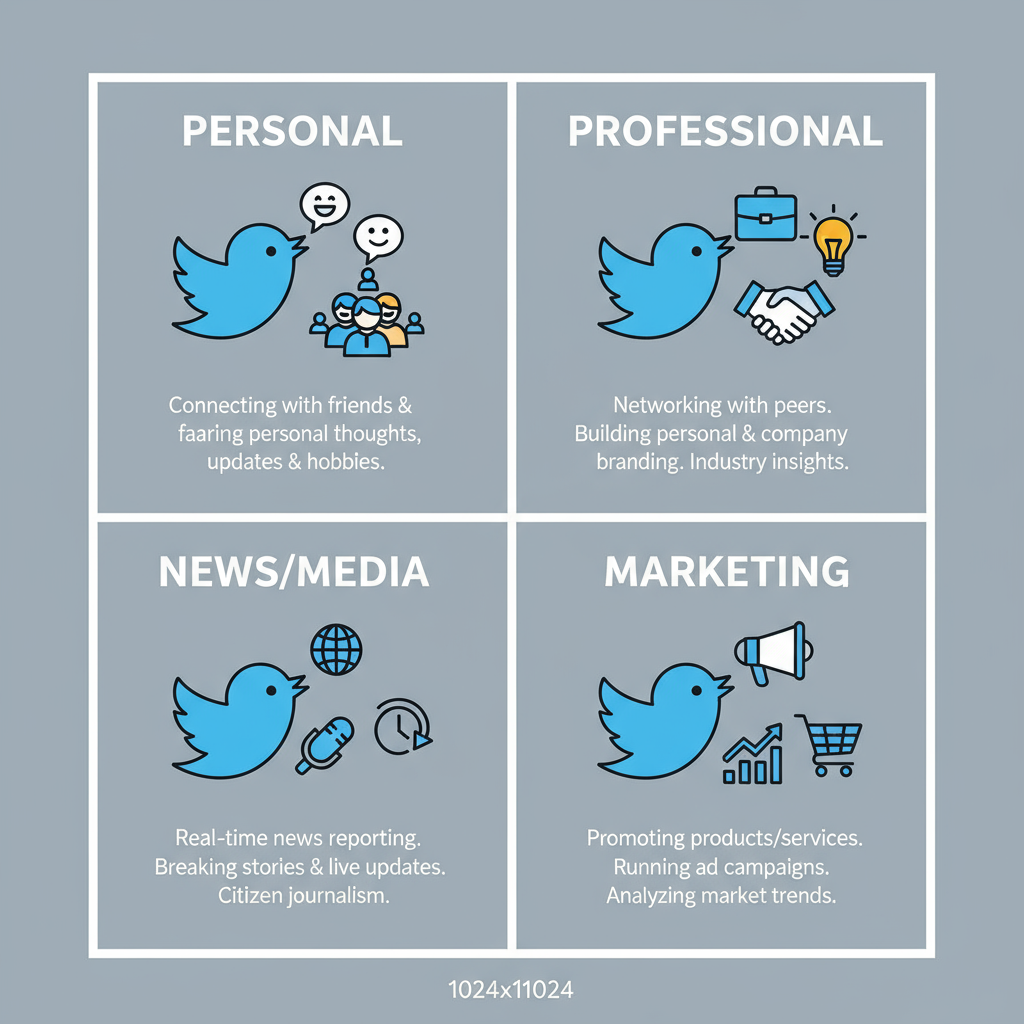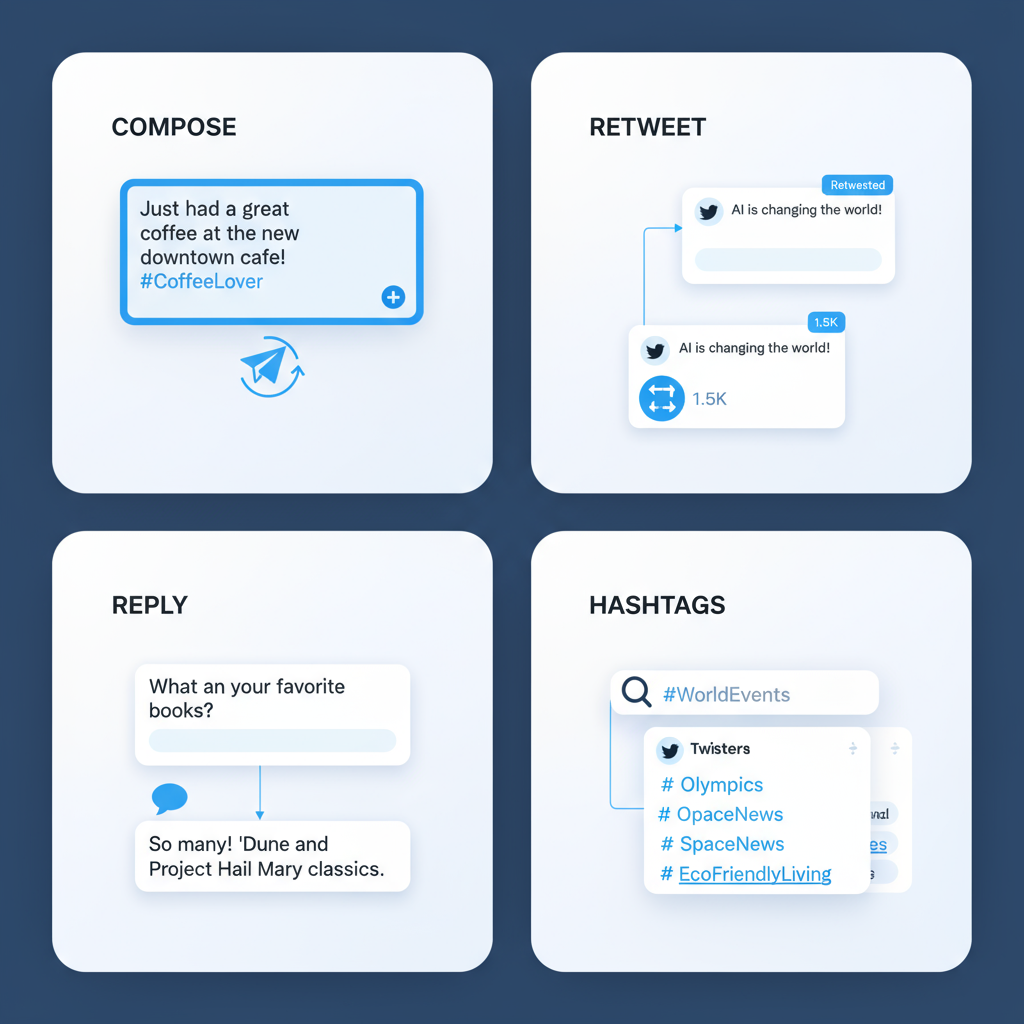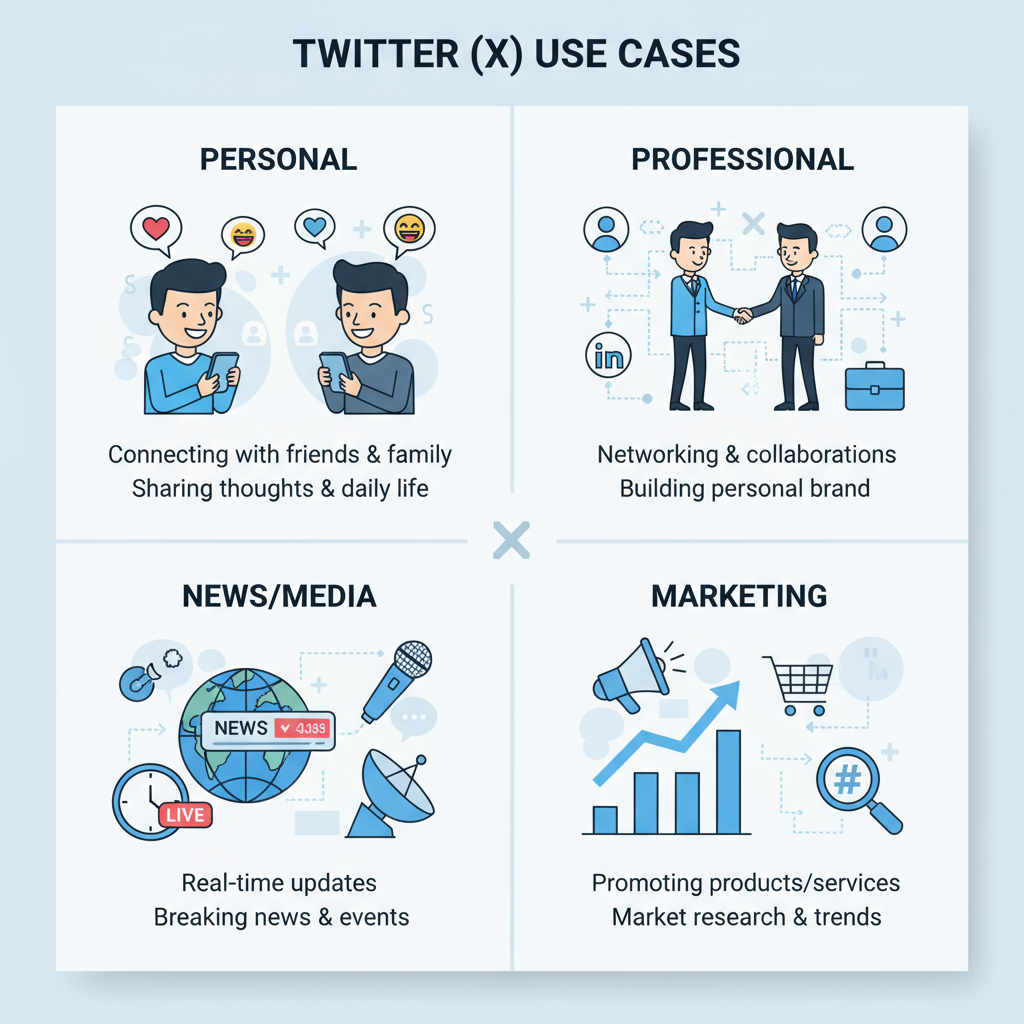What Is Twitter For and How People Use It
Learn what Twitter is used for, from personal sharing and professional branding to marketing, networking, and breaking news in real time.

Introduction to Twitter as a Social Media Platform
When someone asks "what is Twitter for", the answer goes far beyond simply posting short messages. Twitter is a microblogging and social networking service that allows users to share text-based updates, images, videos, and links in real time. Thanks to its fast-paced stream of content, the platform has become a major hub for news, opinions, and conversations across the globe.

Unlike photo-centric apps or long-form blogging platforms, Twitter thrives on concise, often instantaneous communication. This brevity and immediacy make it uniquely suited to everything from casual chats to breaking news coverage, making it a powerful tool for communication in the digital age.
---
Brief History of Twitter and Its Evolution
Twitter was launched in March 2006 by Jack Dorsey, Biz Stone, and Evan Williams. Initially, posts—called tweets—were limited to 140 characters, mirroring SMS text message constraints. In 2017, the limit was expanded to 280 characters, giving users more room for expression while maintaining brevity.
Over time, Twitter introduced features such as:
- Retweets for resharing others’ content.
- Hashtags (#) for topical categorization.
- Trending topics for surfacing popular discussions.
- Spaces for live audio conversations.
These innovations have kept Twitter relevant in an ever-changing social media environment and significantly enhanced its functionality for diverse audiences.
---
Core Functions: Tweets, Retweets, Replies, Hashtags
The backbone of Twitter’s functionality lies in four core elements:
- Tweets – Short messages that may include text, media, or links.
- Retweets – Sharing another user’s tweet with or without commentary.
- Replies – Responding directly to a tweet to foster conversation.
- Hashtags – Using `#` followed by keywords to group tweets around a specific topic.
Example tweet format:
Just attended the #TechConference2024 — amazing talks on AI innovation! 🚀These components make it easy to publish content, engage with others, and discover new information.
---
Twitter for Personal Use: Sharing Thoughts, Connecting with Friends
For everyday users, Twitter is a versatile space to:
- Post quick thoughts or observations.
- Share life updates in real time.
- React to trending events and cultural moments.
- Follow celebrities, friends, and interesting accounts.
By following accounts that match their interests, users can turn Twitter into a personalized feed of entertainment, information, and dynamic conversation.
---
Twitter for Professional Use: Networking, Brand Building, Thought Leadership
Professionals often leverage Twitter as a personal branding and networking tool. Key benefits include:
- Establishing expertise: Sharing insights and resources from your industry.
- Connecting with peers: Following and engaging with relevant professionals.
- Gaining visibility: Getting noticed by influencers, recruiters, and collaborators.

For organizations and brands, Twitter offers direct engagement with customers, brand storytelling opportunities, and real-time market feedback.
---
Twitter in News and Journalism: Real-Time Updates and Citizen Reporting
Twitter’s speed and accessibility make it a vital tool for news and journalism:
- Breaking stories can be published instantly.
- Eyewitness accounts provide authentic on-the-ground visuals.
- Journalists can crowdsource leads and details during developing situations.
While this immediacy provides increased reach, it also introduces challenges with verifying facts and avoiding misinformation.
---
Twitter for Marketing: Campaign Promotion, Audience Engagement, Trends
Marketers tap into Twitter’s global reach to:
- Launch new products with broad visibility.
- Run interactive hashtag campaigns.
- Engage customers through polls and conversation.
- Track trending topics to shape content strategy.
| Marketing Tactic | Description | Example |
|---|---|---|
| Hashtag Campaigns | Create a unified topic for user engagement | #ShareACoke |
| Twitter Ads | Paid promotions targeted by demographics/interests | Promoted Tweets |
| Brand Polls | Interactive questions to boost engagement | Vote for your favorite flavor |
| Influencer Collaboration | Partnering with popular accounts | Sponsored shoutouts |
---
Role of Hashtags and Trending Topics in Content Discovery
Hashtags organize Twitter’s vast content and improve discoverability. Trending Topics highlight subjects that are gaining rapid attention, often localized by region.
Practical hashtag tips:
- Keep them short and relevant.
- Avoid excessive hashtag use.
- Monitor trending tags for timely content alignment.

Using hashtags strategically can increase engagement and extend your reach beyond existing followers.
---
Using Twitter for Activism and Social Movements
Twitter’s openness makes it a powerful amplifier for activism:
- Mobilizing protests and rallies.
- Raising awareness on social justice issues.
- Coordinating relief and support efforts during crises.
Movements such as #MeToo and #BlackLivesMatter successfully used Twitter to gain global traction and inspire tangible change.
---
Twitter’s Role in Public Conversations and Community Building
Beyond momentary updates, Twitter fosters long-term conversations:
- Communities form around niche passions and industries.
- Public figures interact directly with followers.
- Users participate in Q&A sessions, live chats, and themed discussions.
This shared dialogue strengthens trust and builds lasting relationships between users.
---
Differences Between Twitter and Other Social Platforms
While Facebook centers on personal networks and Instagram thrives on visual stories, Twitter emphasizes:
- Real-time information dissemination.
- Public discourse openness (most tweets are visible to all).
- Brief, text-first interactions.
| Platform | Primary Format | Core Strength |
|---|---|---|
| Short text updates | Real-time news and conversation | |
| Mixed media posts | Personal connections | |
| Photos and videos | Visual storytelling | |
| Professional articles & posts | Career networking |
---
Best Practices for Leveraging Twitter Effectively
To maximize Twitter’s potential:
- Engage regularly: Respond to comments and retweet thoughtfully.
- Use multimedia: Images, GIFs, and videos boost interaction rates.
- Optimize timing: Post during peak audience hours.
- Stay consistent: Keep up a regular posting schedule.
- Track performance: Use analytics tools to refine strategy.
---
Potential Drawbacks and Criticisms of Twitter
Despite its benefits, Twitter faces ongoing challenges:
- Rapid spread of misinformation.
- Exposure to harassment or trolling.
- Formation of echo chambers with limited viewpoint diversity.
Users should take advantage of blocking, muting, and reporting features to manage their Twitter experience.
---
Conclusion: How Twitter Fits into Modern Communication
Ultimately, what is Twitter for? It serves as a global stage for ideas, news, marketing, and connections. Whether you use it for professional brand building, personal updates, activism, or staying informed, Twitter’s concise, fast-moving structure allows you to engage audiences instantly.
Its blend of brevity, speed, and openness makes it both a vital communication channel and a mirror of public sentiment—one that continues to influence conversations worldwide.
If you want to strengthen your online presence and join dynamic, real-time discussions, exploring Twitter’s unique advantages is an excellent first step.




